Abstract
A microcosm system to physically model the fate of Aroclor 1242 in Hudson River sediment was developed. In the dark at 22 to 25 degrees C with no amendments (nutrients, organisms, or mixing) and with overlying water being the only source of oxygen, the microcosms developed visibly distinct aerobic and anaerobic compartments in 2 to 4 weeks. Extensive polychlorinated biphenyl (PCB) biodegradation was observed in 140 days. Autoclaved controls were unchanged throughout the experiments. In the surface sediments of these microcosms, the PCBs were biologically altered by both aerobic biodegrading and reductive dechlorinating microorganisms, decreasing the total concentration from 64.8 to 18.0 micromol/kg of sediment in 1140 days. This is the first laboratory demonstration of meta dechlorination plus aerobic biodegradation in stationary sediments. In contrast, the primary mechanism of microbiological attack on PCBs in aerobic subsurface sediments was reductive dechlorination. The concentration of PCBs remained constant at 64.8 micromol/kg of sediment, but the average number of chlorines per biphenyl decreased from 3.11 to 1.84 in 140 days. The selectivities of microorganisms in these sediments were characterized by meta and para dechlorination. Our results provide persuasive evidence that naturally occurring microorganisms in the Hudson River have the potential to attack the PCBs from Aroclor 1242 releases both aerobically and anaerobically at rapid rates. These unamended microcosms represent a unique method for determining the fate of released PCBs in river sediments.
Full text
PDF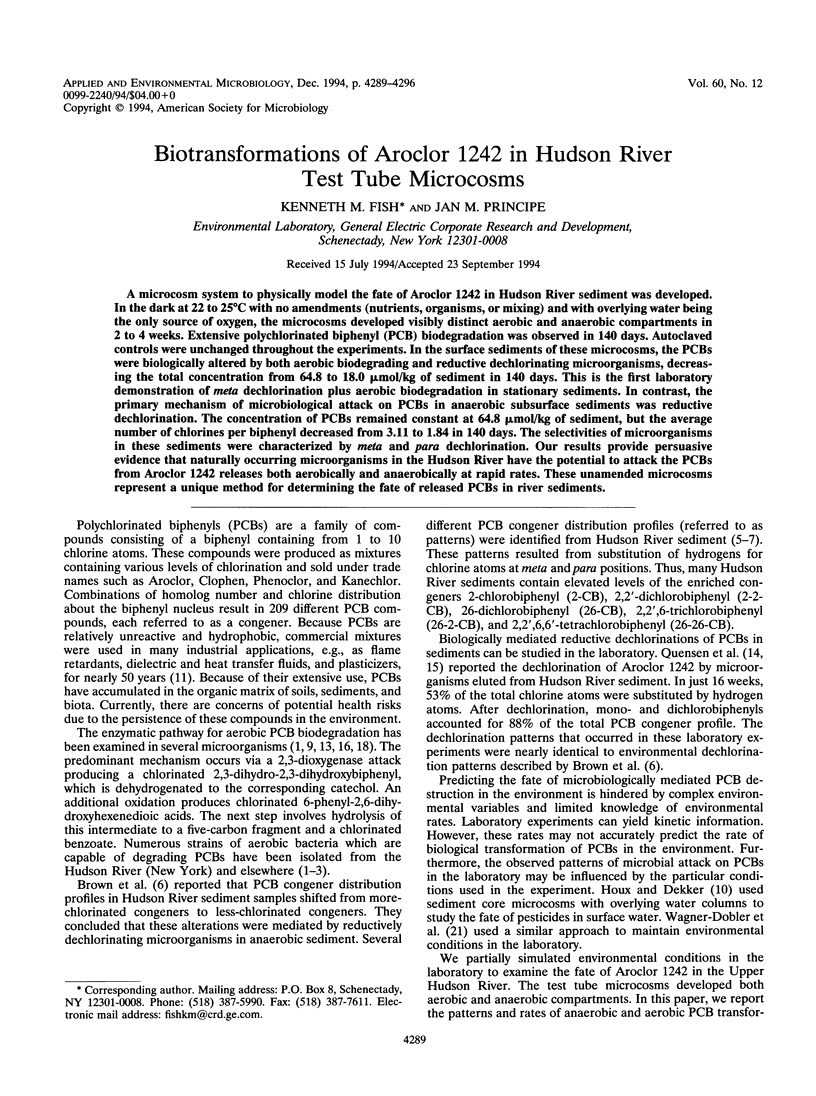
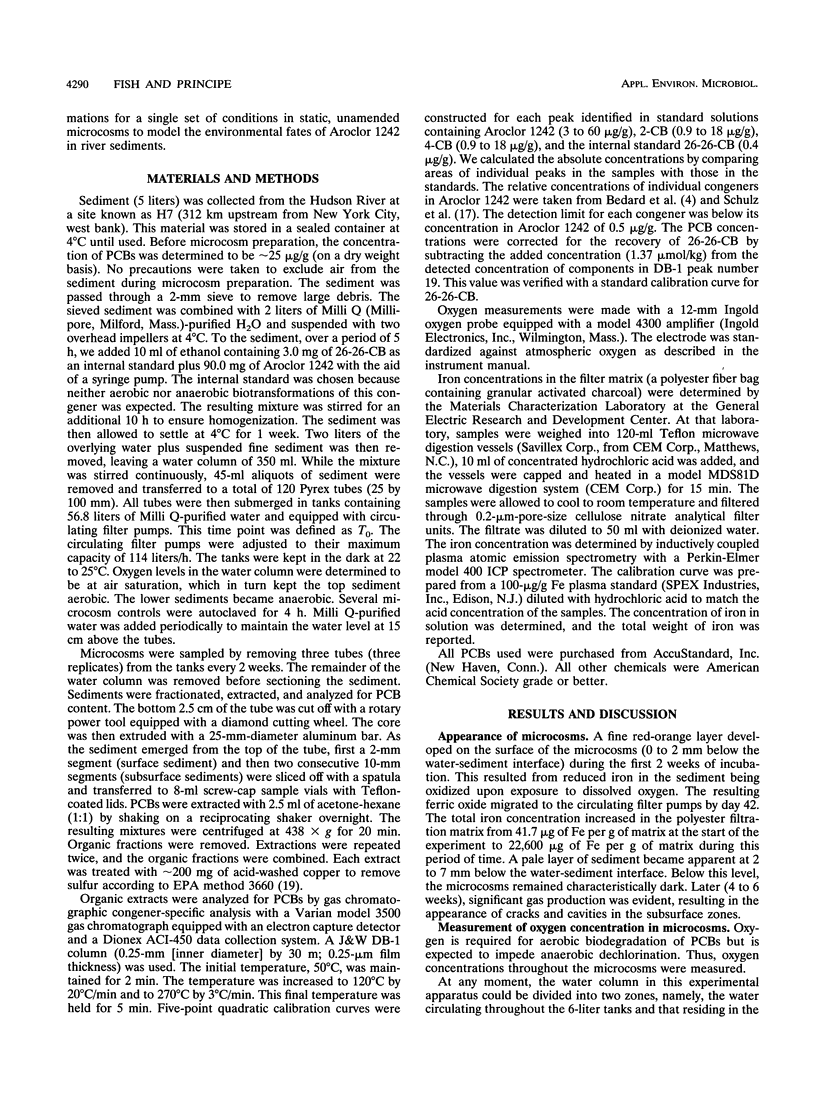
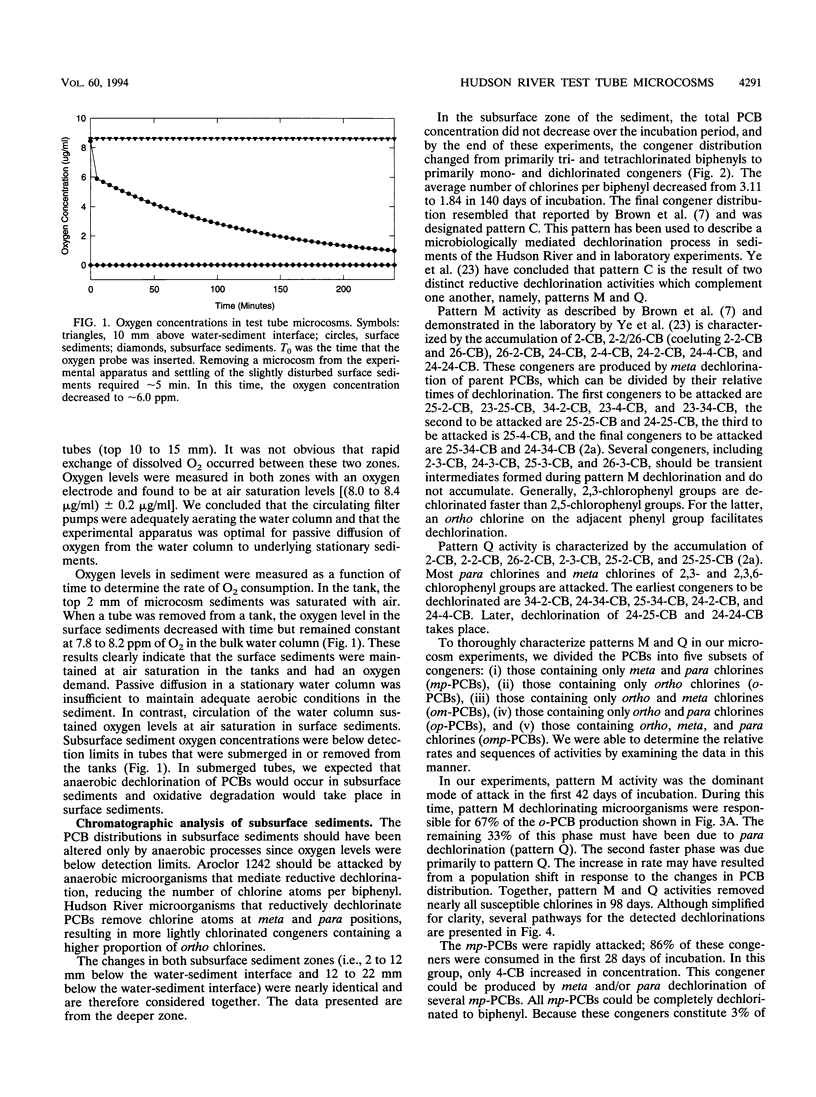
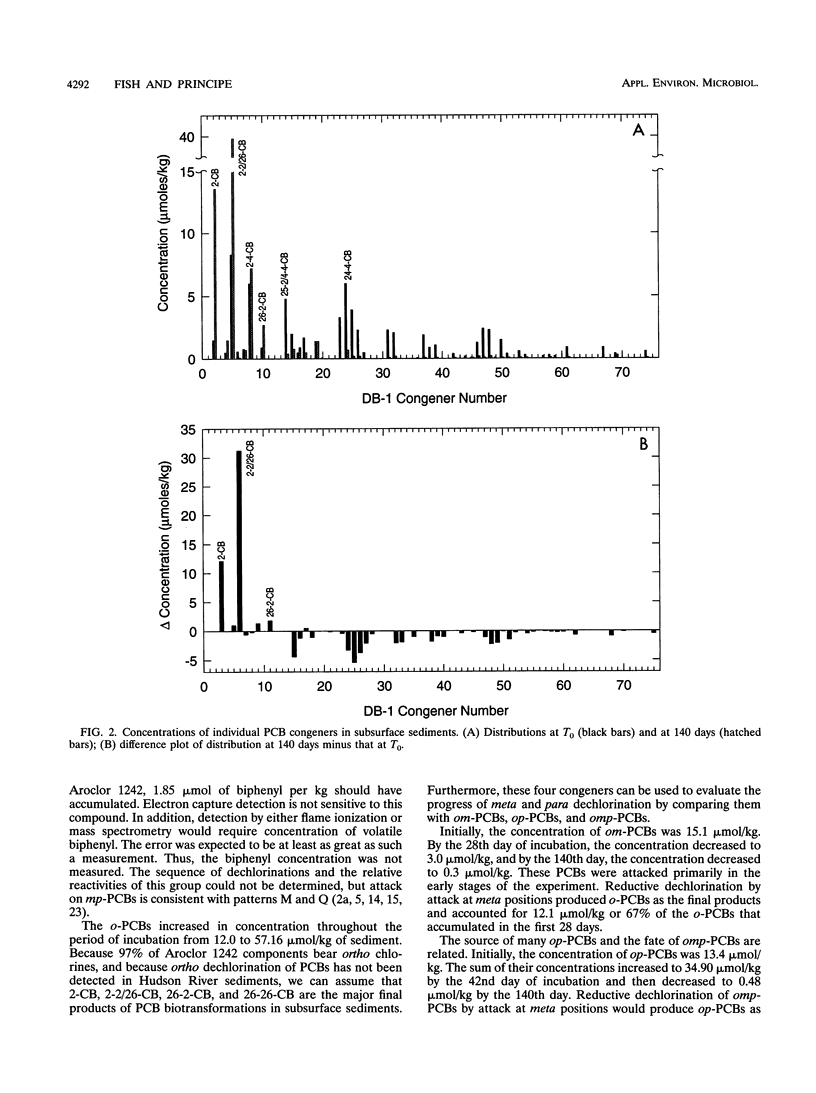
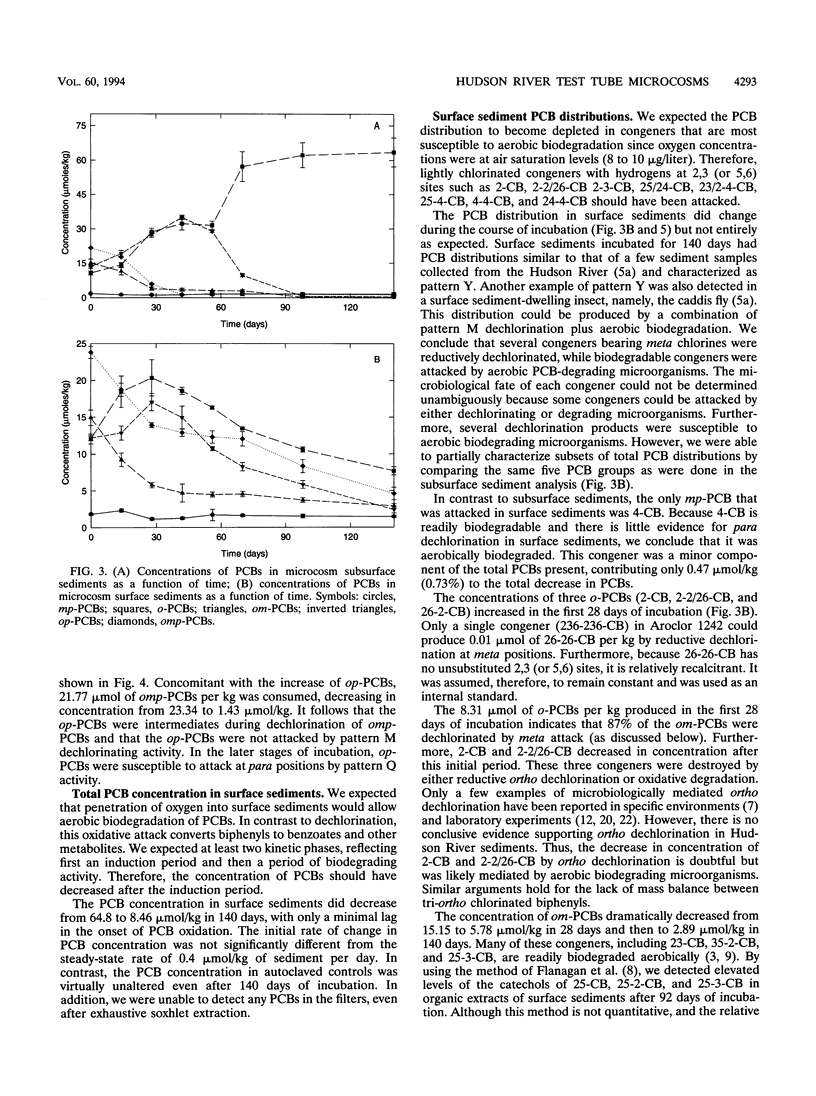
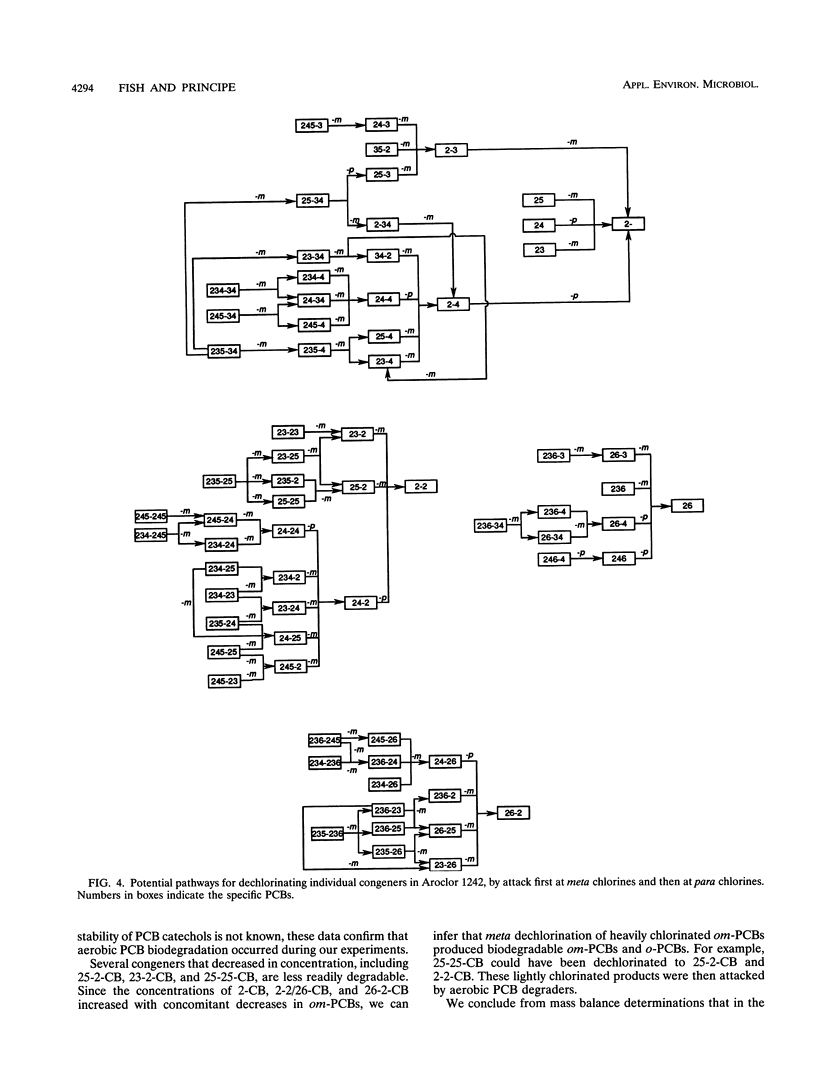
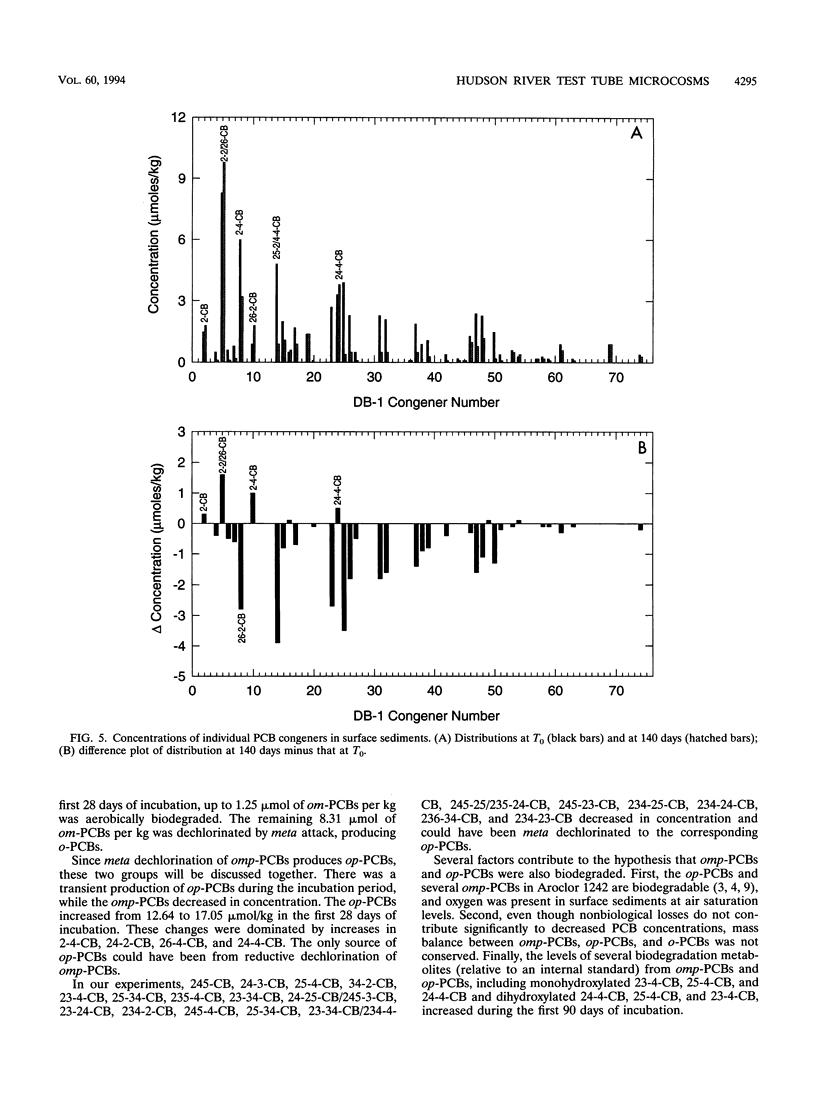
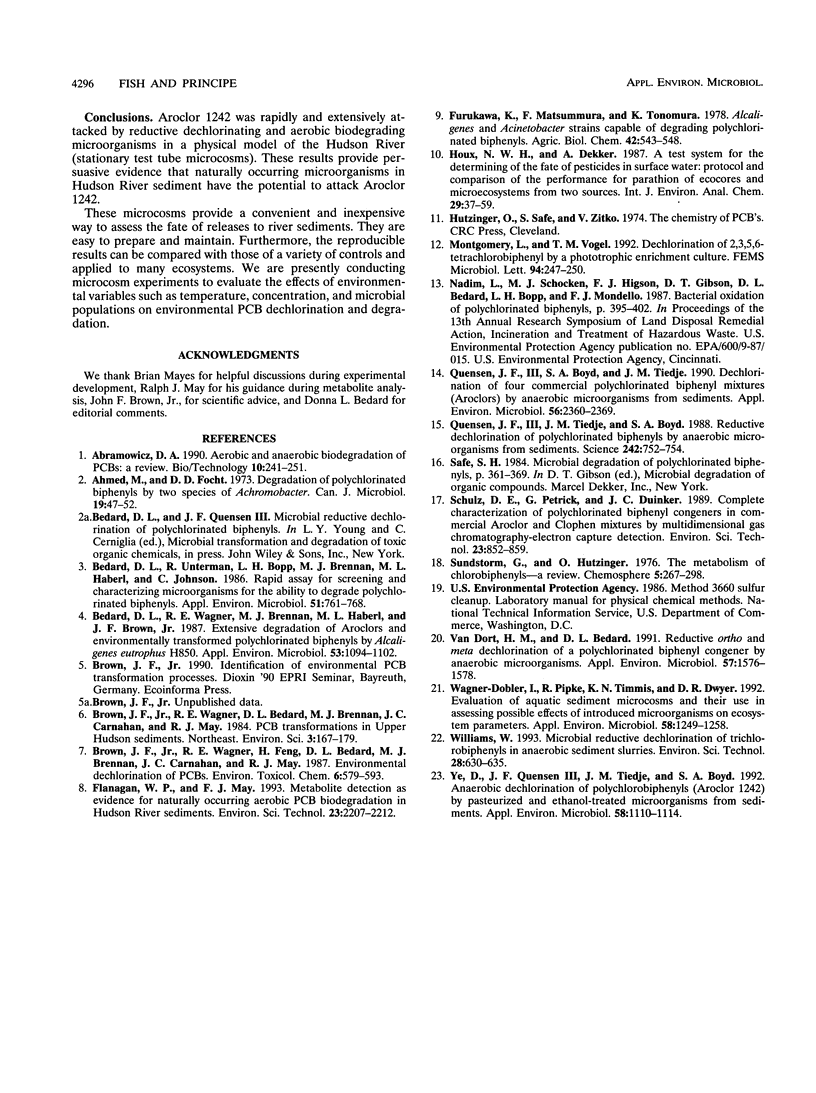
Selected References
These references are in PubMed. This may not be the complete list of references from this article.
- Ahmed M., Focht D. D. Degradation of polychlorinated biphenyls by two species of Achromobacter. Can J Microbiol. 1973 Jan;19(1):47–52. doi: 10.1139/m73-007. [DOI] [PubMed] [Google Scholar]
- Bedard D. L., Unterman R., Bopp L. H., Brennan M. J., Haberl M. L., Johnson C. Rapid assay for screening and characterizing microorganisms for the ability to degrade polychlorinated biphenyls. Appl Environ Microbiol. 1986 Apr;51(4):761–768. doi: 10.1128/aem.51.4.761-768.1986. [DOI] [PMC free article] [PubMed] [Google Scholar]
- Bedard D. L., Wagner R. E., Brennan M. J., Haberl M. L., Brown J. F., Jr Extensive degradation of Aroclors and environmentally transformed polychlorinated biphenyls by Alcaligenes eutrophus H850. Appl Environ Microbiol. 1987 May;53(5):1094–1102. doi: 10.1128/aem.53.5.1094-1102.1987. [DOI] [PMC free article] [PubMed] [Google Scholar]
- Houx N. W., Dekker A. A test system for the determining of the fate of pesticides in surface water. Protocol and comparison of the performance for parathion of ecocores and micro ecosystems from two sources. Int J Environ Anal Chem. 1987;29(1-2):37–59. doi: 10.1080/03067318708078410. [DOI] [PubMed] [Google Scholar]
- Montgomery L., Vogel T. M. Dechlorination of 2,3,5,6-tetrachlorobiphenyl by a phototrophic enrichment culture. FEMS Microbiol Lett. 1992 Jul 15;73(3):247–250. doi: 10.1016/0378-1097(92)90638-5. [DOI] [PubMed] [Google Scholar]
- Quensen J. F., 3rd, Tiedje J. M., Boyd S. A. Reductive dechlorination of polychlorinated biphenyls by anaerobic microorganisms from sediments. Science. 1988 Nov 4;242(4879):752–754. doi: 10.1126/science.242.4879.752. [DOI] [PubMed] [Google Scholar]
- Quensen John F., Boyd Stephen A., Tiedje James M. Dechlorination of Four Commercial Polychlorinated Biphenyl Mixtures (Aroclors) by Anaerobic Microorganisms from Sediments. Appl Environ Microbiol. 1990 Aug;56(8):2360–2369. doi: 10.1128/aem.56.8.2360-2369.1990. [DOI] [PMC free article] [PubMed] [Google Scholar]
- Van Dort H. M., Bedard D. L. Reductive ortho and meta Dechlorination of a Polychlorinated Biphenyl Congener by Anaerobic Microorganisms. Appl Environ Microbiol. 1991 May;57(5):1576–1578. doi: 10.1128/aem.57.5.1576-1578.1991. [DOI] [PMC free article] [PubMed] [Google Scholar]
- Wagner-Döbler I., Pipke R., Timmis K. N., Dwyer D. F. Evaluation of aquatic sediment microcosms and their use in assessing possible effects of introduced microorganisms on ecosystem parameters. Appl Environ Microbiol. 1992 Apr;58(4):1249–1258. doi: 10.1128/aem.58.4.1249-1258.1992. [DOI] [PMC free article] [PubMed] [Google Scholar]
- Ye D., Quensen J. F., 3rd, Tiedje J. M., Boyd S. A. Anaerobic dechlorination of polychlorobiphenyls (Aroclor 1242) by pasteurized and ethanol-treated microorganisms from sediments. Appl Environ Microbiol. 1992 Apr;58(4):1110–1114. doi: 10.1128/aem.58.4.1110-1114.1992. [DOI] [PMC free article] [PubMed] [Google Scholar]


